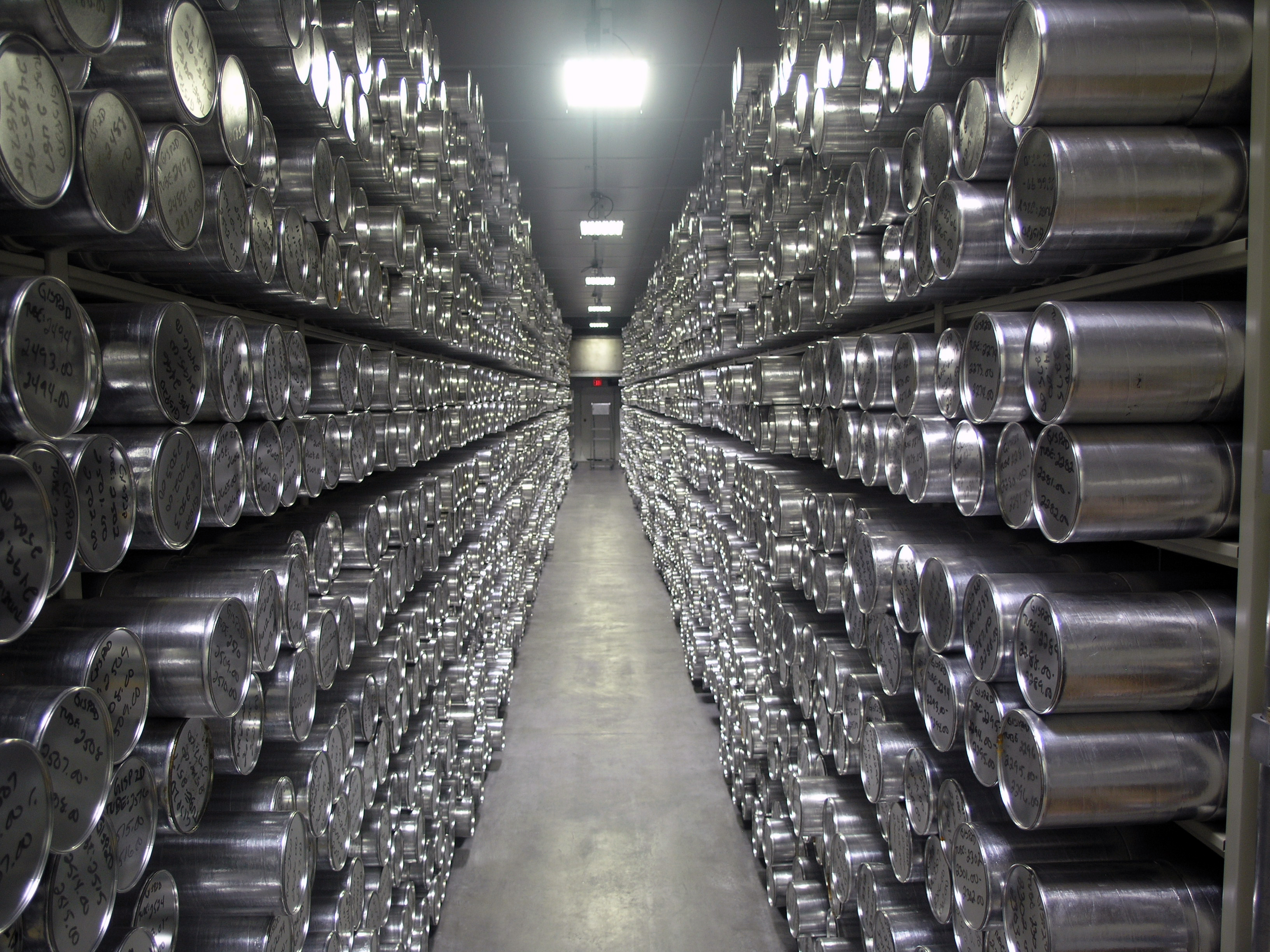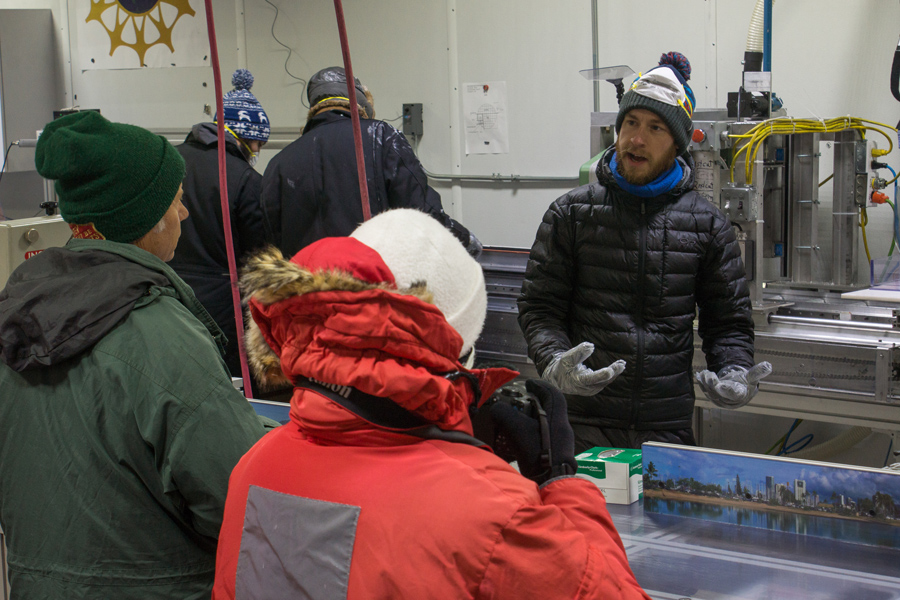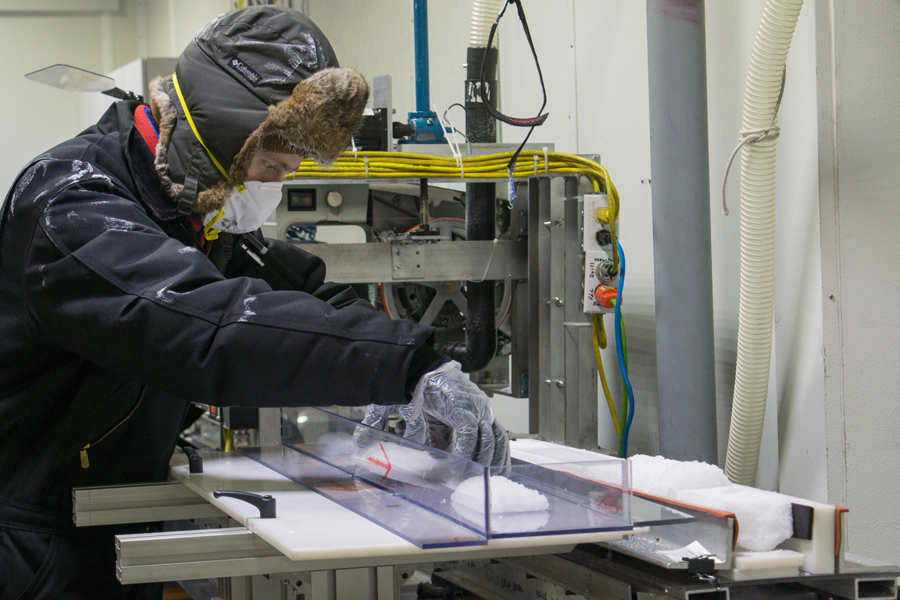
TO THE CASUAL OBSERVER, mid-June may not seem like the ideal time to explore the science of ancient ice. However, last month, as the hot sun beat down outside, a dozen geoscience professors donned boots and thick red parkas to brave sub-zero freezers and learn the secrets embedded in ice many thousands of years old, from the coldest places on Earth.

The U.S. Ice Drilling Program Office (IDPO), funded by the National Science Foundation, brought a dozen college professors to the Denver area for an up-close look at the important role that ice cores play in paleo-climate science. Dubbed "The School of Ice," the inaugural four-day workshop infused the most up-to-date ice science into the course materials for the American Meteorological Society's (AMS) Climate Studies Course. Climate scientists shared how the chemical composition of tiny air bubbles and other indicators trapped in ancient ice helps them model future climate changes.
"It's really important that we get that science out to people like these professors," said Linda Morris, the director of education and public outreach for the U.S. Ice Drilling Program based at Dartmouth College. "Ice cores are a pristine archive of really valuable data."
The workshop featured a mix of site visits, hands-on activities and lectures from some of the nation's top ice and climate scientists. The group toured the vast ice core archives stored in the freezers at the National Ice Core Laboratory in Lakewood, Colo., visited the isotope lab at the University of Colorado-Boulder's Institute of Arctic and Alpine Research and spent a day at the Antarctic Support Contract office in Centennial, Colo., learning about the complex logistics needed to extract and transport polar ice cores from some of the planet's most remote locations.

The IDPO helps coordinate the short and long-term planning of U.S. ice coring operations in both the Northern and Southern hemispheres. The IDPO and AMS designed the workshop to help college professors who may not have much experience with ice cores better understand how researchers use cores to understand Earth's ancient climate.
The workshop expands on the AMS's Climate Studies Course, a comprehensive bundle of materials for college professors to teach climate science in their classrooms. To bring about the School of Ice, Morris at the IDPO partnered with James Brey at the AMS, who had organized a number of similar courses and workshops on a range of Earth science topics.
"The AMS education program has always gone directly to the scientists for content for our courses," Brey said. "This is why you have to bring the folks who are going to be teaching the materials in contact with experts."
Lockheed Martin funded the program through its philanthropic outreach program.
The professors selected for the School of Ice all come from minority-serving institutions, colleges and universities whose students are largely made up of African-Americans, Hispanics, Native Americans and other underrepresented groups.
"We need to build that pipeline of underrepresented groups in the workforce, because it is a major source of talent that is not being tapped very well," Brey said. "The numbers of those students that go into earth science is very, very small."

South Texas College, where Mario Lopez teaches, is one such institution. Located about ten miles from the Rio Grande, a large proportion of South Texas College students are Hispanic and many are first generation college students.
"Being able to engage the students requires being able to think about what they would be interested in," Lopez said. "This workshop has introduced me to some neat ways to do that."
He added also that in order to best serve his students, workshops like the School of Ice let him learn the latest climate science directly from the researchers performing the experiments.
"Being kind of isolated from the climate research community where I live and work, it's really important to be able to build a network to stay connected with that field," Lopez said.
Mixed in with their technical lectures, the visiting professors learned experiments for students to try in their lab sessions. They sawed through artificial ice cores to extract colored marbles representing the chemical isotopes in ancient air, watched pooling water from a melting ice cube atop a small sand pile simulate the planet's rising oceans should the continental ice sheets thaw, and observed oozing putty mimic the flow of glaciers.
"There's a lot that I can take back into my classroom," said Shea Rose, a geoscience professor at the University of West Georgia. "I teach introductory level and upper level, and really I've found something for all of those levels in the workshop."
[See related article - Immerse yourself in ice]
